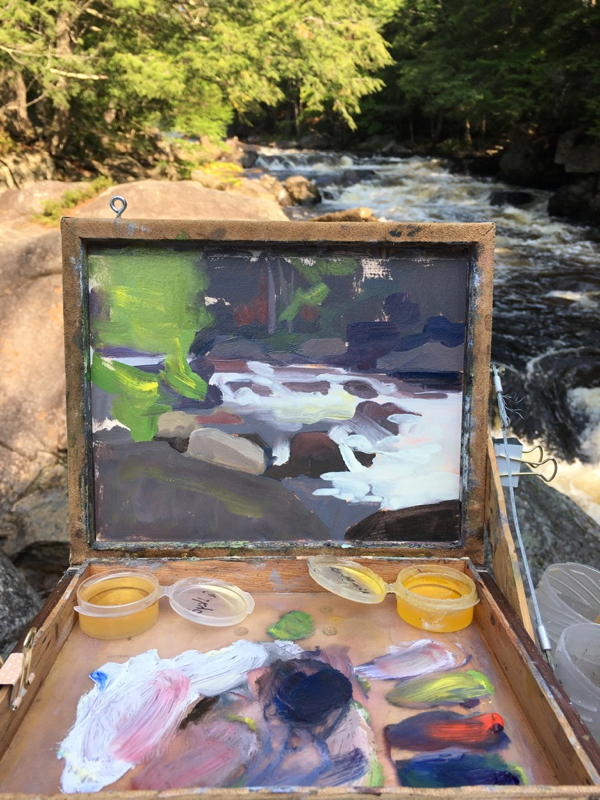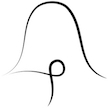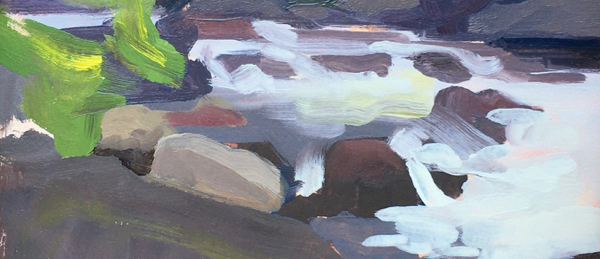Augur Falls

In the last post, I talked about how my paintings are physical objects that provide an opportunity to experience something beautiful. I observe something beautiful. I paint a representation of the beauty I see. The viewer interprets the painting and experiences something beautiful.
This process begins with observation. There has to be something beautiful for me to see in the first place.
So, let’s look at today’s painting: My aunt and I went on a hike to Augur Falls in the Adirondack State Park in upstate NY. I stood on a rock in the river, just above the falls, and painted facing upstream. I’m a realist artist. That means that I paint things that look like things. I stand facing the river and paint was I see. Any viewer will look at my painting and say, “That is a painting of a river.”
We haven’t talked about realism yet, and this painting is a great occasion for addressing this topic because, well, it’s not very realistic. It is, in fact quite abstract in the sense that what is most noticeable about it is not that it is a painting of a river but rather the shapes and colors of the paint in themselves.
We have said that my paintings are physical objects that provide an opportunity for the viewer to have an experience of beauty. We have also stated that the painting begins with an observation of nature. I stand outside and paint what I see. I’ll talk more about that starting point, but with this particular Augur Falls painting, I was to focus on another aspect of my paintings. I could have painted Augur Falls, according to the definition of painting that I dave provided, in a variety of ways. The scene of the falls in nature is beautiful in many ways: In the contrast of the dark stones on the white water, in the harmony of the dark shadows in the forest with the dark of the smooth areas of water, in the rhythm of the horizontal planes of descending levels of water, or in the simple color of the green leaves that shows so brilliantly as being the only really vivid, chromatic element in the scene. I could have painted a bunch of horizontal stripes of dark grey and white with a big, green blotch on top and very legitimately have called it a “painting of the falls.” But, I didn’t. I attempted to paint something which, when seen, causes the viewer recognize what was the original inspiration for the painting – namely, a turbulent stream in the woods.
Why is that important? All my paintings are like this. I make things that look like things. In short, I am a realist painter. So, I ask myself, “what does a realist painting do that an abstract painting does not and why is that important to me.”
I think the answer is that while both an abstract and a realist painting provide an experience of visual beauty, a realist painting provides an experience of beauty particular to a concrete experience of the artist’s. For example, this painting or Augur Falls: the horizontal, cascading planes of water – What I want is not just for the viewer to experience the rhythm, I want the viewer to experience the rhythm as it is particularly in the waterfall and the pleasure of abstracting that rhythm from the planes of water. Abstraction itself is an experience of beauty.
Kind of a tangent, but, for one thing, the experience of abstraction teaches the process of abstraction. If the viewer sees, in a painting, both the waterfall and the abstract beauty of rhythm in repeated planes, then he can look at other visual phenomena and and abstract beauty from them. Whether it is rhythm in repeated planes of water or rhythm in a pattern of smoke stacks, it’s still rhythm. In short, realist painting actually teaches people to SEE.

